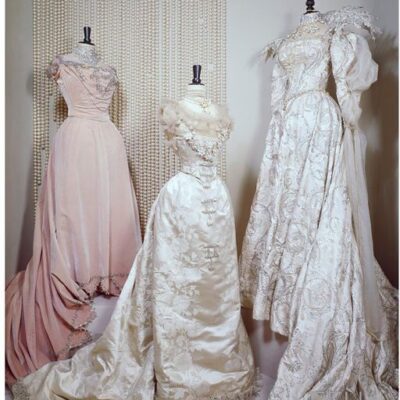
Fashion & History 19.12.2022
12.04.2022
costume historyEuropean fashionfashion and artfashion exhibitionfashion historymenswear
The first major exhibition the museum dedicates to the artistry and creativity of masculine appearance
On March 19, the V&A opened Fashioning Masculinities: The Art of Menswear, the first major V&A exhibition to celebrate the power, artistry and diversity of masculine attire and appearance, featuring historical treasures from the V&A’s collections, landmark loans, and contemporary looks by established fashion designers as well as emerging ones. Divided in three sections – Undressed, Overdressed, Redressed – the exhibition showcases the variety of possible masculinities across the centuries, from the Renaissance to the global contemporary. With outfits worn by the likes of Timothée Chalamet and Sam Smith, David Bowie and Marlene Dietrich, the exhibition challenges and widens the very definition of menswear.
Undressed explores the male body and underwear and looks at how classical European ideals of masculinity have been perpetuated and challenged, through plaster casts of the Apollo Belvedere and the Farnese Hermes juxtaposed with prints and photography by David Hockney, Lionel Wendt, Zanele Muholi, as well as advertising campaigns for Calvin Klein and Emporio Armani.
Fashion’s fascination with the body has seen it support changing masculine ideals, from evoking classical drapery with Giorgio Armani, to sculpting flesh, as seen in garments by Jean-Paul Gaultier and A-COLD-WALL*. Contemporary ensembles, by Ludovic de Saint Sernin, and Virgil Abloh for Off White, show how designers are using sheer fabrics to create men’s ensembles.
Undressed ends with Auguste Rodin’s Age of Bronze sculpture, and Tiresias, a performance by Cassils, in which the artist melts a neoclassical torso carved in ice with their body heat.
The second gallery, Overdressed, explores the elite masculine wardrobe: oversized silhouettes, patterns and colour, lavish materials to express status and wealth. Drawing synergies across the centuries, a Dolce & Gabbana cape is juxtaposed with a Sofonisba Anguissola painting. The section also includes grooming, with makeup and shaving equipment.
This gallery also explores the historical significance and contemporary value of pink: Aristocratic sitters in oil paintings by Joshua Reynolds and Jean-Baptiste Perronneau are displayed alongside pink ensembles by Harris Reed and Grace Wales Bonner, and notably a custom Randi Rahm ensemble worn by Billy Porter at the Golden Globes in 2019.
From Alessandro Michele for Gucci and Kim Jones for Fendi to Rahemur Rahman, Ahluwalia and Orange Culture, Overdressed shows a full rainbow of masculine outfits.
The third gallery, Redressed focuses on the urban uniform, the suit, from Beau Brummell to the contemporary runway, opening on English country tailoring and military attire influenced civilian dress.
In the twentieth century men (and women appropriating men’s attires) defined their styles through tailoring, and designers provided new interpretations of the iconic garment: from Tom Ford for Gucci, Hedi Slimane for Dior to Donatella Versace Muccia Prada, Alexander McQueen and Raf Simons.
Robert Longo’s 1981 drawing from the series Men in the Cities introduces the final part of the section about the dissolving of the suit, where ensembles by Rick Owens, JW Anderson, Comme des Garçons and Haider Ackermann are on show.
The exhibition culminates in a celebratory finale, showcasing three iconic gowns – a Christian Siriano tuxedo gown worn by Billy Porter, an Alessandro Michele for Gucci custom gown and tailored jacket worn by Harry Styles, and a wedding dress by Ella Lynch worn by Bimini Bon Boulash – alongside a specially commissioned, monumental film by Quentin Jones with Cadence Films.